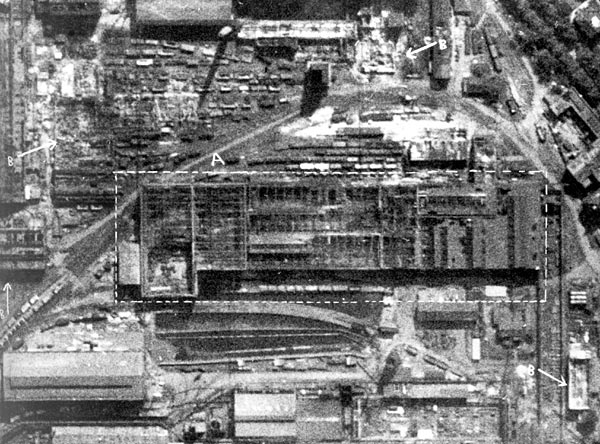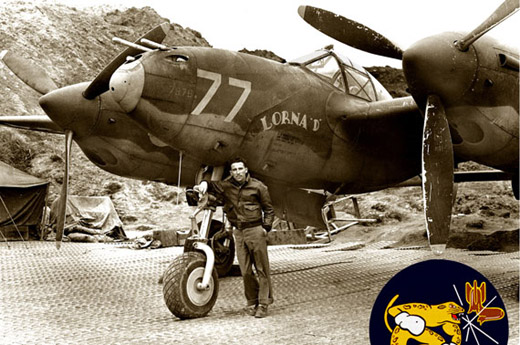Air Operations, Aleutians
Due to poor weather, 6 28th Composite Bomb Group B-24s and 12 B-25s dispatched in three separate ground-support missions to Attu are diverted to Kiska, where only 1 B-25 is able to locate a target. Directed by a Patrol Wing 4 PBY, 343rd Fighter Group P-38s bring down 5 of 16 G4M 'Betty' bombers encountered over Attu between 1615 and 1640 hours. 2 P-38s are lost.
Air Operations, Bismarcks
43rd Heavy Bomb Group B-17s and 90th Heavy Bomb Group B-24s attack Ubili, the Gasmata airfield on New Britain, the Kavieng airfield on New Ireland, and the harbor at Kavieng.
[Air Operations, Europe
BOMBER COMMANDDaylight Ops:
- 12 Venturas of No. 487 Squadron bomb a power station at Zeebrugge, its first operation since suffering heavy losses on the Amsterdam raid 3 weeks earlier. The bombs fall on the railway yards near the power stations.
- There are no losses.
- 826 aircraft are sent to bomb Dortmund. Included in the total are 343 Lancasters, 199 Halifaxes, 151 Wellingtons, 120 Stirlings and 13 Mosquitos.
- Pathfinders mark the target accurately in clear weather and the ensuing attack goes according to plan. It is a very successful raid. Many industrial sites are hit including the Hoesch steelworks which stops production. Dortmund will not be attacked again for a year. Air Chief Marshal Harris sends a message to his crews advising them that 100,000 tons of bombs have now been dropped on a Germany which Göring had said in 1939 would not receive a single bomb.
There is an interesting story to tell about a Wellington of 431 Squadron which took part in this raid. Just after leaving the target, the Wellington was coned by searchlights and hit several times by fragments of flak. The rear gunner reported that he thought the aircraft was on fire. The pilot twice put the aircraft into a steep dive to evade the searchlights but was not able to do so. There was some confusion over whether an order to bale out was given by the pilot and the pilot actually did leave the aircraft. The bomb aimer, Sergeant SN Sloan, an Englishman, took over the controls and eventually was able to shake off the searchlights. The navigator and wireless operator were still aboard and Sergeant Sloan flew the aircraft back to England and made a perfect landing at Cranwell. He was immediately awarded the Conspicuous Gallantry Medal, commissioned and posted to a pilot training course.The wireless operator, Flying Officer JBG Bailey, and the navigator, Sergeant GCW Parslow, received immediate awards of the DFC and the DFM respectively.
Devastation at the Hoesch AG Factory, Dortmund |
 |
- 15 OTU aircraft carry out leaflet flights over France.
- 1 Wellington is lost.
ITALY:
NAAF P-38s attack the zinc works at Iglesias and the port at Carloforte, San Pietro Island.
USAAFPANTELLERIA:
NASAF B-25s and B-26s attack the port and Marghana Airdrome, and NAAF P-40s attack gun emplacements throughout the island.
[Air Operations, Hawaii
VII Fighter Command P-40 fighter-bombers based on Kauai attack a Japanese Navy submarine. Hits and a possible sinking are claimed.
Air Operations, Solomons
During the night, 5 XIII Bomber Command B-24s attack the airfield at Ballale and the Kahili airfield on Bougainville, but 10 other B-24s abort in the face of bad weather while attempting to mount a follow-up attack on the same targets. Also, in a separate action, a mine-laying mission is completed in the Buin area while 19 XIII Bomber Command B-17 and B-24s mount a diversionary attack against Buin, Kahili, and Tonolei.
[Aleutians
On Attu, the 2nd Battalion of the 17th Infantry of the Southern Force attacks the important Fish Hook Ridge but are held up by intense enemy fire. Strong patrols of the Northern Force attempt unsuccessfully to force the Holtz-Sarana Pass. After the day's unsuccessful efforts it is decided that Fish Hook Ridge must be the objective of a co-ordinated attack by units from both Southern and Northern Forces. This begins the final phase of the Attu Island battle.
Lockheed P-38E 41-2252 'Lorna D' |
 |
Atlantic
21 German MTBs begin intensive minelaying operations along the English southern coast. The operation will continue until June 12.
[Battle of the Atlantic
- U-752 is damaged by a rocket-firing Swordfish biplane and later scuttled.
- U-boat losses rise dramatically, and Grand-Admiral Karl Dönitz admits defeat in the Battle of the Atlantic by withdrawing U-boats from the troubled waters. Up to May there were 40 U-boats in place eah day in the Atlantic, but between February and May 91 U-boats have been lost and such losses cannot be sustained. A combination of long-range bombers, radar and submarine hunter groups have made the Atlantic a hazardous place for U-boats.
| Class | Type VIIC |
| CO | Kapitänleutnant Karl-Ernst Schroeter |
| Location | Atlantic, W of River Shannon |
| Cause | Air attack/scuttling |
| Casualties | 29 |
| Survivors | 13 |
Canada, Home Front
William Aberhart, the 'Social Credit' Premier of Alberta, 1935-42, dies at age 64.
[North Africa
TUNISIAThe 18th Army Group staff is disbanded, having served its purpose.
[Pacific
<- The US PT-boat tender Niagara (AGP-1) is sunk by aircraft bombs in the Solomon Islands area.
- The US PT boats PT-165 and PT-173 are lost when the tanker transporting them (Stanvac Manila) is torpedoed by Japanese submarine I-17 100 miles south of New Caledonia.
Yugoslavia
As reported by a German new agency, there is heavy fighting in South Croatia between German troops and Yugoslav guerillas.
[